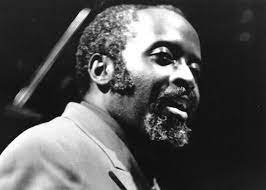Do you know the Hayden Carruth poem that consists exclusively of The Fantastic Names of Jazz? It comes to mind as I run down the names of all the Chicago blues piano players who established the tradition that inspired Evanston, Illinois native Junior Mance. The pianist’s1963 recording Junior’s Blues is on my turnable this week.
Chicago’s spawned not only various jazz lineages, but a deep tradition of blues piano that began in the Twenties and spanned at least five decades. From Pinetop Smith, Cow Cow Davenport and Meade Lux Lewis to Albert Ammons, Little Johnny Jones, and Otis Spann, Chi town’s been hometown to scores of ticklers who excelled at blues, boogie woogie and barrelhouse piano. Other Chicago-based legends include Jimmy Yancey, Roosevelt Sykes, Joshua Altheimer, Little Brother Montgomery, Blind John Davis, Sunnyland Slim, Hosea Lee Kennard, Pinetop Perkins, and Lafayette Leake. Even Memphis Slim and the Russian-born Art Hodes made their best impressions in the Windy City.

Julian Clifford Mance, Jr., has been a renowned modern jazz pianist for over 60 years. He worked as a sideman in bands led by Gene Ammons, Lester Young, Dizzy Gillespie, and Cannonball Adderley between 1947 and the early ‘60’s. He’s been at the helm of his own trios since then, and he’s recorded a lot of consistently excellent material, much of it colored with the blues and gospel inflections that are also prominent in the work of Horace Silver, Ray Bryant, Hampton Hawes, and Wynton Kelly.
For the 1963 Riverside session that we’re featuring this week, Mance played an all-blues program including “Creole Love Call,” “Blue Monk,” “The Jumpin’ Blues,” and two from the piano blues repertoire, Leroy Carr’s “In the Evening,” and Meade Lux Lewis’s “Yancey Special.” Bob Cranshaw and Mickey Roker join Mance for a set that crackles with swing and soul.

I was a young jazz aficionado when I first heard Junior’s Blues, and I was impressed by something Dan Morgenstern wrote in his liner note essay. He described the music as “affirmative,” a quality that he found characteristic of the jazz tradition, but that contradicted what he saw as a growing trend in jazz criticism to deny such common traits in the music. Morgenstern also said that the basic function of the blues was to lift one’s spirits (Wynton Marsalis later described it to me as fostering an “optimism that’s not naïve”), and that if Mance’s set didn’t do it for you, you must really be in a world of trouble. I’ve been listening to Mance and reading Morgenstern ever since, and happily they’re both still with us.
Here’s a clip of Mance in 2007 talking and playing at Cafe Loup, the West Village nightclub where he’s been in residence in recent years.